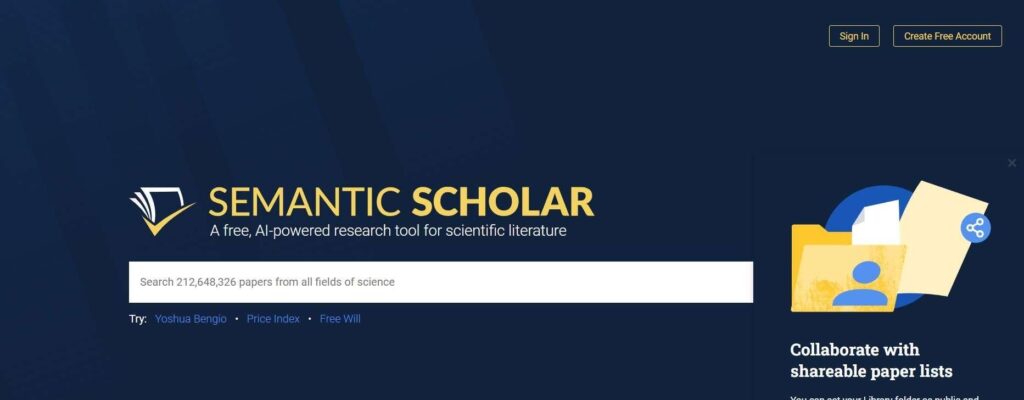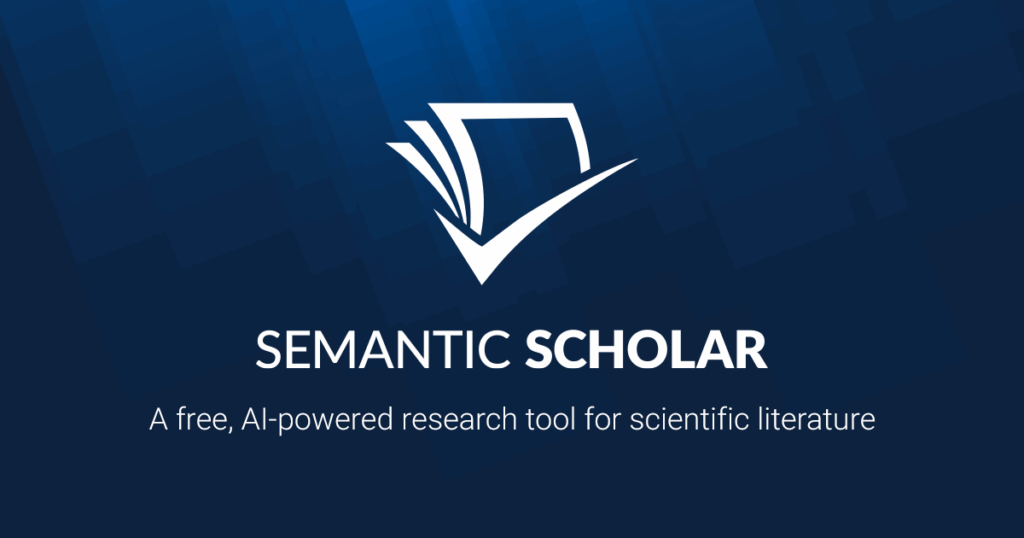- Elicit synthesizes and compares studies; Semantic Scholar discovers and prioritizes relevance.
- Use Semantic Scholar to map the field and Elicit to extract and organize evidence.
- Complement them with ResearchRabbit, Scite, Litmaps, Consensus and Perplexity.

Choosing between Elicit and Semantic Scholar is not trivial when what's at stake is the time and quality of your literature review. Both have made enormous strides thanks to AI, but they fulfill different roles: one acts as an assistant that organizes, summarizes, and compares, while the other is an engine that discovers and prioritizes knowledge at scale. In the following lines, you'll see how to use them to unleash their full potential in 2025 without getting lost along the way, with a practical and straightforward approach. clear recommendations for different scenarios.
Before going into detail, it's worth noting that Elicit draws on the Semantic Scholar database (over 125 million articles), which is why they often complement each other better than they compete. Even so, there are significant differences in coverage, results ranking, data extraction, and evidence validation that tip the scales depending on the type of work. If you're someone who thinks, "I want something that saves me hours," you'll find it useful to take a look at Elicit. when to use each one and how to combine themLet's get started with this guide on: Elicit vs Semantic Scholar
Elicit and Semantic Scholar: what each one actually does

Elicit is an AI-powered research assistant designed to automate tedious review steps: you type in a question and it returns a list of relevant studies, with section summaries, and even a comparative table with findings, methods, limitations, and study design. It integrates export to management tools like Zotero and allows batch processing of PDFs. Its strength lies in the fact that turns open searches into usable evidence shortly.
Semantic Scholar, for its part, is an AI-powered academic search engine that prioritizes discovery and relevance. It extracts key metadata using natural language processing, displays influential citations, relationships between authors and topics, and adds automatic summaries of main points, much like initiatives such as Google Scholar LabsIt also detects trends and impactful authors. In short, it's useful for map the terrain and find quality literature quickly.
- The best of Elicit: questions in natural language, sectional synthesis, comparative matrices, data extraction and workflow for systematic or thesis reviews.
- The best of Semantic Scholar: Intelligent discovery, citation tracking, influence metrics, and AI-generated summaries help you prioritize what to read first.
Key differences: why they sometimes seem to return "different things"
A recurring question is why Elicit sometimes returns lesser-known studies or those from less visible journals. The explanation is twofold. On the one hand, its ranking system may favor studies that are well-suited to the research question, even if they are not the most cited; on the other hand, the open availability of full texts limits what can be automatically summarized. This does not mean that it disregards high-impact articles, but rather that... Elicit's priority is immediate usefulness in answering your questionnot so much the fame of the magazine.
Semantic Scholar indexes both open access content and paywalled article metadata. While full text isn't always available, the platform does display citations, influential authors, and thematic relationships that help assess relevance. If you feel Elicit is "obscure," open the same search in Semantic Scholar and review the citation context: you'll quickly see whether that study fits within the mainstream or if it provides a useful peripheral angle.
When to use each tool
If you're in the exploration phase and want a quick overview of the field, start with Semantic Scholar. Its prioritization based on influence and metadata quality allows you to identify seminal articles, key authors, and trends. Once you've identified the core, move on to Elicit to build comparative tables, extract variables, summarize methods, and organize evidence ready for writing. This combination greatly accelerates the process because You discover with one and systematize with the other.
For systematic reviews and theses, Elicit excels at creating consistent matrices and abstracts across studies. For open searches, literature maps, and ongoing topic monitoring, Semantic Scholar and related tools like ResearchRabbit or Litmaps provide a necessary overview. Ideally, they should be combined. I wish a single tool could do it allBut the best-performing cash flow in 2025 is cross-platform and orchestrated.
Recommended workflow combining Elicit and Semantic Scholar
- Initial discovery in Semantic Scholar: search by keywords, filter by year, and review influential citations. Gather 15–30 pivotal articles and identify key authors and journals. At this stage, prioritize quality and centrality.
- Exploring connections: Use ResearchRabbit to see co-authorship networks and topics, and Connected Papers to visualize the evolution of the idea. This way you expand your set without losing focus on the main idea. what really connects the studies.
- Context-based validation of citations with Scite: identifies whether works are cited to support, contrast, or simply mention. This saves you time separating "noise from authority" and gives you clues for discuss results with sound judgment.
- Synthesis and extraction in elicitFormulate your research question, import your list of articles, and generate section summaries and comparative tables with findings, methods, and limitations. Export to Zotero and move forward. processed evidence.
- Timely support with AI-powered queries: Perplexity gives you cited answers in real time, useful for quickly clearing up doubts, and Consensus synthesizes the evidence around a specific question from peer-reviewed sources, which is perfect for validate hypotheses in an agile way.
- Reading and summarizing documents: Scholarcy generates automatic summaries of each paper, and SciSpace helps with annotation, understanding equations, and formatting manuscripts. If you handle large batches of PDFs, this duo speeds up the process. effective reading.
Specific functions that are worth knowing
Semantic Scholar
- Detailed article exploration: AI-generated summaries, key sections, and related topics let you decide what to read first. objective criteria.
- Influential interactions and citations: highlights the most impactful citations and relevant authors in the field, ideal for placing each work within the scientific conversation and calibrate your weight.
- Direct responses: cards with the main ideas of the article that automatically summarize findings and conclusions, useful for initial screening without opening the PDF.
- Citation and reference tracking: quick navigation through references and articles that cite the work to expand the corpus in a controlled manner and without losing the thread.
elicit
- Start with scientific queries in natural language: formulate your question and get a table with relevant studies, objectives, methods, and key results, ready to use. work and compare.
- Abstracts and information extraction: sectional synthesis, detection of limitations and variables, and standardized fields for systematically comparing studies and without manual spreadsheets.
Consensus
- Scientific queries: a direct interface to ask questions and receive a summary based on peer-reviewed papers, with links and citations—very useful when you need a backed-up response.
- Consensus Meter: a visualization of the evidence landscape that shows whether there is agreement or disparity in the literature, making it easier to justify your position with clear data.
- Article popularity and abstracts with AI: signals of impact and synthesis of studies to continue prioritizing reading and referencing with updated criteria.
Beyond the duo: AI alternatives and complements
ResearchRabbit
Visual exploration of networks of articles, authors, and topics. If you're more comfortable with graphics, you'll love seeing how schools of thought, collaborations, and lines of inquiry emerge. It allows you to follow authors or topics and receive notifications when something new appears—perfect for field surveillance.
Connected Papers
Connection maps show the conceptual evolution of a topic. They are very useful for understanding "where an idea comes from" and what alternative paths other groups have explored. You'll see at a glance which studies surround your pivotal paper and which contribute to it. decisive context.
Scythe
Contextual citation analysis: classifies whether a work supports, contrasts with, or merely mentions another. This prevents inflated references and provides arguments to position your contribution. Integrates with reference managers and helps to to shield the discussion.
Iris.ai
Knowledge extraction and automated review with AI. Ideal when handling large documents and needing to semi-automatically detect concepts, variables, and relationships. Accelerates the review phase. deep reading.
Scholarly
Automatic summaries, contribution tables, and reference extraction for each article. It's the perfect tool for turning a set of PDFs into manageable notes. checklists.
Litmaps
Quote charts and trend tracking. If you're interested in knowing where the field is headed and which studies are gaining relevance, Litmaps makes it easy with interactive maps and collaboration features. teamwork.
Perplexity AI
Multilingual conversational search engine with visible citations (PubMed, arXiv, scientific publishers). It responds in Spanish, English, and more, maintains the context of your questions, and helps clarify specific doubts. sources in sight.
scispace
From search to formatting: discover and annotate with AI, better understand the mathematics in a paper, and format manuscripts according to journal guidelines. Integrate with repositories and facilitate a clean manuscript flow.
DeepSeek AI
Advanced linguistic modeling for complex tasks. If you work with specialized text generation and analysis, its ability to adapt to specific domains provides an extra advantage. research flexibility.
Useful tools in the initial phase and writing support
ChatGPT
Great support for writing and revising, but it's not an academic search engine (see the discussion about asking ChatGPT in class). Where it really shines is when you upload your PDFs (even folders) and ask it to explain methods, summarize sections, or clarify concepts. For literature reviews, use it on documents you've selected; this helps you avoid bias and get the best results. faithful summaries of your texts.
Keenious
Find related articles based on the content of a text you enter, a PDF you upload, or the URL of an academic document. According to the platform itself, it does not store the documents you analyze, which is practical if you work with unpublished or work-in-progress manuscripts and require reasonable confidentiality.
Chat4data and a code-free extra
Chat4data, as a browser extension, automates the collection of references from the page you're viewing. You ask it to "collect titles, authorship, and number of citations," and it returns a table ready to export to CSV or Excel, capable of reading lists from Google Scholar, Dialnet, or SciELO without leaving the tab. It's a simple way to convert pages into data.
If you later need to scale extraction or set up complex workflows, a no-code plugin like Octoparse can be a great partner: it captures structured data from repository websites or digital libraries with a visual interface. It's especially useful for mass collection projects in media or networks.
Usage profiles: quick examples
- Master's or PhD student in education, psychology, or social sciences: ask questions on Consensus to get answers with evidence and sources, use Semantic Scholar to identify the most influential articles, and then use Elicit to create a comparative table by method. Finish with Scite to refine citations and avoid errors. confirmation bias.
- Technical research with math or code: rely on SciSpace to understand equations, Perplexity for quick answers with visible citations, and Elicit to standardize variables and results. With Litmaps you'll see where the trend is heading, and with ResearchRabbit will help you discover new collaborators.
- Work geared towards rapid synthesis for proposal or project: Semantic Scholar to locate "anchor papers", Scholarcy to extract the key points of each one and Elicit to create an evidence matrix ready for write the theoretical framework.
Practical comparison: summarized pros and cons
- Elicit: Saves hours creating tables and summaries, excellent for structured reviews. It can prioritize less cited studies if they answer your question very well. A winner when searching automate synthesis.
- Semantic Scholar: excels at discovery, ranks by influence, and displays key citations and authors. Perfect for building an initial corpus and understanding the rural architecture.
Writing and productivity support tools (selection with indicative prices)
In addition to the Elicit-Semantic Scholar core and its search plugins, it's worth exploring other tools focused on writing, editing, and organization. The figures that follow are approximations reported by the sources consulted; check each product's official page for any changes. Even so, they will help you identify options and cost estimates.
- Jenni: a writing assistant to unlock your first draft and improve your style. Plans include a free plan with a daily limit and an unlimited plan for around $12 a month, plus options for teams. Useful when you need structured creative impulse.
- Paperpal: a grammar and style checker focused on academic articles, with a "Prime" option for around $5,7/month according to reviews. It provides clarity and compliance with editorial standards for polished deliveries.
- Phrase: SEO-oriented content, with plans starting at around $45/month for one user. If your research feeds into a blog or search engine optimized content, it helps you to align keywords and structure.
- Paperguide: a search engine specifically designed for research, offering abstracts and related work discovery. Plans range from $12 to $24 per month, and a free trial is available. Interesting for quick reviews.
- Yomu: an article reader and organizer with highlighting, annotations, and summaries. There is a reference to free and paid plans (e.g., "Pro" starting at $11/month) that facilitate manage mountains of PDFs.
- SciSpace: In addition to what has already been mentioned, it offers tiers ranging from a free basic plan to plans with more editing and collaboration features. It helps shape the manuscript, from idea to shipment.
- CoWriter: writing support for students with grammar and structure suggestions; "Pro" plans start at around $11,99/month and up. Useful for building confidence and fluency.
- QuillBot: paraphrasing and rewriting modes with a free option and paid plans reported to start at $4,17/month for teams. Ideal for avoiding repetition and adjusting the tone of the text.
- Grammarly: Error detection and style improvement with free, "Pro," and business plans. Suitable for polishing emails, articles, and submissions. real-time feedback.
Practical tricks and combinations that work
- If you're concerned about the "obscurity" of some results in Elicit, run the same query in Semantic Scholar, apply filters for impact and date, and return to Elicit with a curated list. This way you control the quality of the input and maintain... the speed of synthesis.
- To justify methodological decisions or assess the robustness of findings, consult Consensus with your research question and review the "consensus meter." It gives you a quick idea of whether the field is converging or diverging, and offers Ready-to-use quotes.
- If you work with materials in multiple languages, Perplexity provides answers in Spanish, English, and more, with the sources visible. It's perfect for clarifying terminological or conceptual doubts while you're still in the process. same thread of conversation.
- To map influential authors and schools of thought, alternate between ResearchRabbit, Connected Papers, and Litmaps. This three-pronged approach avoids blind spots and reveals emerging trends—key if you're looking to thesis topic or gaps.
- How Semantic Scholar works and why it's one of the best free paper databasesComplete guide
Elicit and Semantic Scholar aren't rivals, but rather pieces of the same puzzle: one discovers and prioritizes, the other summarizes, compares, and organizes. Around them, tools like ResearchRabbit, Connected Papers, Scite, Iris.ai, Scholarcy, Litmaps, Perplexity, SciSpace, DeepSeek, ChatGPT, Keenious, Chat4data, Octoparse, Consensus, and writing utilities like Jenni, Paperpal, Frase, Paperguide, Yomu, CoWriter, QuillBot, and Grammarly make research a faster and more reliable process. With a combined workflow, you go from "where do I start?" to "I have a coherent narrative of evidence," and that, in research, is pure gold. Now you know much more about Elicit vs Semantic Scholar.
Passionate about technology since he was little. I love being up to date in the sector and, above all, communicating it. That is why I have been dedicated to communication on technology and video game websites for many years. You can find me writing about Android, Windows, MacOS, iOS, Nintendo or any other related topic that comes to mind.
